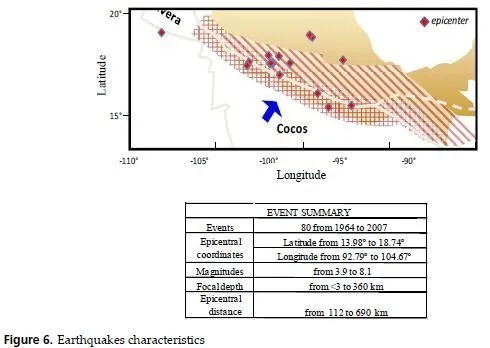Soil-structure interaction (SSI) analysis is a special field of earthquake engineering. It is worth starting with definition. Common sense tells us that every seismic structural response is caused by soil-structure interaction forces impacting structure (by the definition of seismic excitation). However, engineering community used to talk about soil-structure interaction only when these interaction forces are able to change the basement motion as compared to the free-field ground motion (i.e. motion recorded on the free surface of the soil without structure). So, historically the conventional definition of SSI is different from simple occurrence of the interaction forces: these forces occur for every structure, but not always they are able to change the soil motion.
This simple fact leads to the important consequences. If a structure can be analyzed as based on rigid foundation with free-field motion at it, then they use to say that no SSI effects occur (though structure is in fact moved by the interaction forces, and the same forces impact the foundation). Looking at the variety of the real-world situations, we can conclude that only part of them satisfies the conventional definition of SSI.
The ability of the interaction forces to change the soil motion depends, of course, on two factors: value of the force and flexibility of the soil foundation. The value of the interaction force may be often estimated via the base mat acceleration and inertia of the structure. For given soil site and given free-field seismic excitation the heavier is the structure, the more likely SSI effects occur. Usually most of civil structures resting on hard or medium soils do not show the signs of considerable SSI effects.
From the inertial point of view, the heaviest structures we deal with are hydro-structures (like dams) and nuclear power plant (NPP) main structures first of all, reactor buildings. So, the development of the SSI field in the earthquake engineering was historically linked to the development of these two fields of industry.
From the soil flexibility point of view, for the given structure and given free-field seismic excitation the softer is the soil, the more likely SSI effects occur. Soil shear module is a product of mass density and square of the shear wave velocity. Mass density of soil in practice varies around 2,0 t/m3 in a comparatively narrow range, so the main characteristic of the soil stiffness is shear wave velocity Vs. Usually soil is considered soft when Vs is less than 300 m/s, and hard when Vs is greater than 800 m/s. If Vs is greater than 1100 m/s, they usually talk about rigid soil (no SSI effects just rigid platform with a structure on it and excitation taken from the free field).
All these ranges are of course purely empirical. Obviously, one and the same soil can behave as rigid one towards very light and small structure (like a tent), and behave as a soft one towards heavy and rigid structure (like the NPP reactor building).
Sometimes to decide whether to account for SSI effects they compare the natural frequencies of the rigid structure on the flexible soil foundation with those of the flexible structure on a rigid foundation. If the lowest natural frequency of the first set is greater than the first dominant frequency of the second set two and more times, they do not consider SSI effects (e.g., see standards ASCE4-98 [1]). As SSI field is rather sophisticated, sometimes it is worth??neglecting SSI, when allowed.
However, one should keep in mind another situation, when SSI effects occur. In soft soils seismic wave may have moderate wavelength comparable to the size of structure, so that the free-field motion over the soil-structure contact surface will have the so-called space variability. In this case a comparatively stiff structure (even a weightless one) can impact the soil motion by structural rigidity (i.e., stiff contact soil-structure surface will not allow soil to move in the manner it used to move without structure). So, once more the presence of a structure changes the behavior of soil during seismic excitation, which is a SSI effect. This is a situation with considerably embedded structures; the same applies to the great base mats, averaging the travelling seismic waves [2]. But the most typical situation is a simple pile foundation piles are used with soft soils, they are not rigid but usually stiff enough to change the foundation motion.
To conclude this part, let us talk a little about the so-called SSSI structure-soil-structure interaction. When a group of structures is resting on a common soil foundation, the base mat motion of a structure may be changed (as compared to the free-filed motion) not because of this very structure only, but because of the neighboring structures. Of course, if all structures are comparatively light and no SSI effects occur for each of them standing alone, usually no SSSI effects occur for the group. But in case at least one of the structures standing alone can cause SSI effects, the additional waves in the soil (i.e. additional to the free-field wave picture) will spread from this structure, impacting neighbors. Sometimes (for the light/small neighbors) this situation can be analyzed without SSI but with special seismic excitation, accounting for the influence of the heavy neighbor. In other cases several structures should be analyzed together because of the mutual influence.
Thus, general goal of the SSI analysis is to calculate seismic response of structure based on seismic response of free field (sometimes free field may differ from the final soil). General format of the SSI analyses results is basements motion obtained using the information about a) soil foundation (sometimes the initial one and the final one separately), b) structure, c) seismic excitation provided without structures. Another format of the SSI results is soilstructure interaction forces, necessary to estimate the soil foundation capability to withstand earthquake. Sometimes, the complete structural seismic response is obtained together with SSI in the format of response motion of different structural nodes and response structural internal seismic forces.



